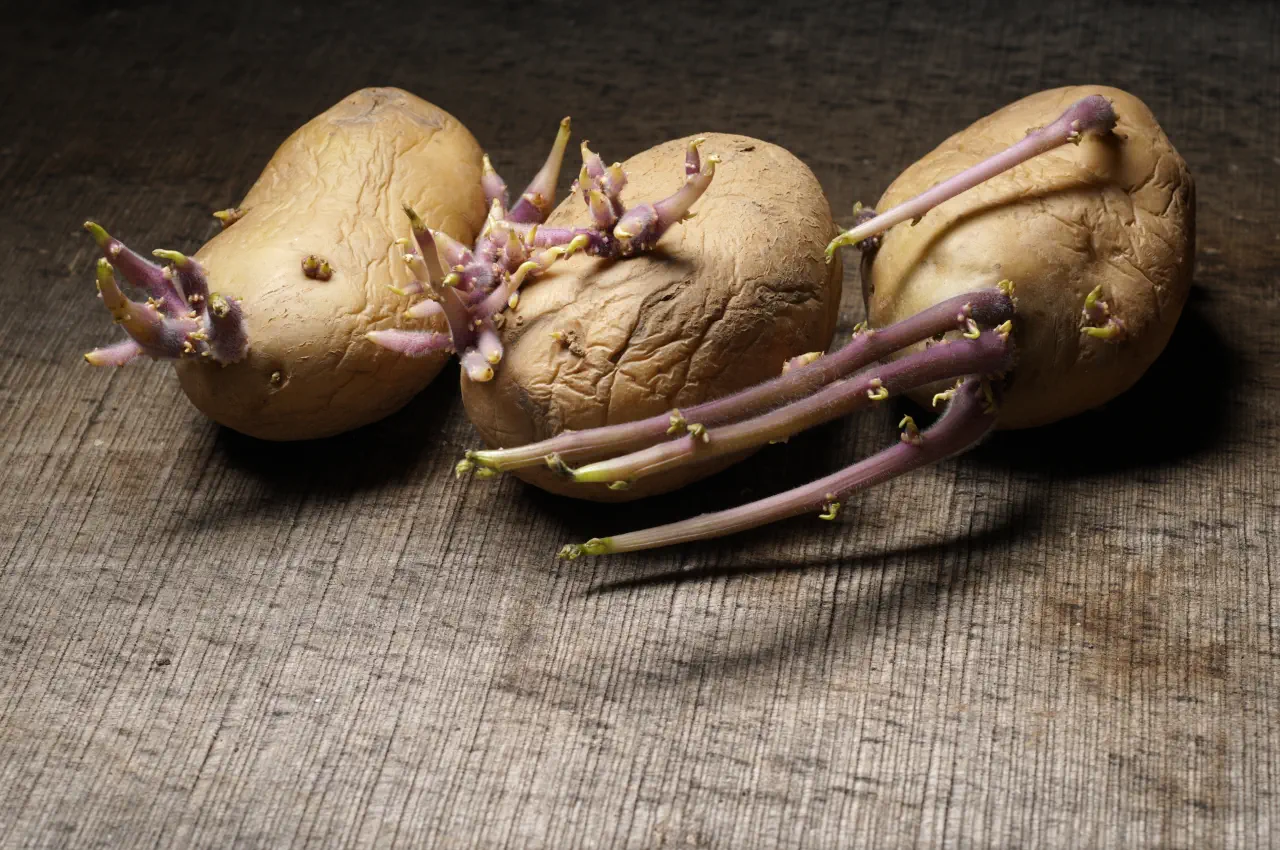Pak Choi is grown for its tasty leaves which are superb when added to stir fries and salads.
The taste is similar to that of mild cabbage and spinach and is a popular addition to many oriental dishes.

The debate over whether seed potatoes should be placed in dark or light conditions has been ongoing for decades. We'll quickly discuss the implications of chitting seed potatoes in either dark or light environments.
Chitting seed potatoes is a process of pre-sprouting them before planting. This practice can be beneficial to the production of earlier crops compared to those that are not chitted prior to planting.
The chitting process itself involves exposing seed spuds - with their eyes facing upwards - in an environment where they receive light but avoid direct sunlight or moisture exposure. The sprouts created from this exposure will eventually become shoots when planted underground, which helps promote growth and yield in the long run. Additionally, by starting the growing process indoors, it increases the chance of successful germination outdoors due to extended periods between sowing and harvest times.
It is important to note that while both dark and light environments have been used successfully for potato chitting over time, light exposure appears to be more effective at stimulating shoot development than darkness alone. Therefore, when deciding on whether to use a darker environment or one exposed to some degree of light while chitting potatoes – taking into consideration local climate conditions – choosing the latter could prove more advantageous overall.
On the other hand, not all evidence supports keeping potatoes in a very bright light while chitting them. Too much exposure can cause substantial losses due to dehydration and increased respiration rates from warmth; thus care must be taken not to expose the tubers excessively to light and heat sources. Additionally, although growing in complete darkness may inhibit sprouting initially, once exposed to light again the potatoes will begin sprouting rapidly – potentially leading to decreased quality control over the crop's appearance and size uniformity.
Overall, careful consideration needs to be given when deciding whether chitting potatoes, too little or too much exposure can both have negative impacts on yield and quality outcomes.
Different approaches have been suggested for chitting potatoes in either dark or light environments. For example, when potatoes are exposed to sunlight during their growth period, they will develop more stolons (underground stems) that produce more ‘eye’ buds which could result in greater yields at harvest time. On the other hand, darkness may be preferable if there is risk of disease from storing potatoes over an extended period of time due to its ability to slow down metabolism and prevent physiological disorders caused by high temperatures.
The decision between using dark or light for chitting should ultimately depend on what kind of potato variety is being used, growing conditions and factors such as temperature control and potential onset of diseases. Therefore, careful consideration needs to be taken into account prior to deciding which method would suit best individual circumstances and desired outcome.
To prevent damage from excessive drying, moisture should be controlled during the chitting process by keeping humidity levels at an optimal range of between 85-90%. This will also promote healthy root growth while minimizing risks associated with rotting stem ends or soggy tuber skin caused by prolonged wetness. Additionally, ventilating the area where the potatoes are being stored helps maintain proper temperature and humidity levels as well as encourages air circulation around each individual tuber.
Therefore, when performing chitting procedures, following these guidelines can yield a greater chance of success.
Chitting seed potatoes is an important step in the potato growing process, as it can help to produce a earlier crop of potatoes. When done in either the dark or light, there are several factors which should be considered when deciding which method to use. In general, chitting in the light results in larger and faster-growing potatoes compared to those that have been chitted in the dark.
It is also important to ensure that tubers are kept at a consistent temperature during chitting, with temperatures between 10°C – 16°C being ideal. To maximize success rate further still, it may be necessary to rotate trays every few days once shoots start appearing, so as not to overcrowd them against one another.
And just to confuse matters more..... remember its rare that farmers chit their potatoes now, preferring to plant straight from cold store...... confusing, yes?